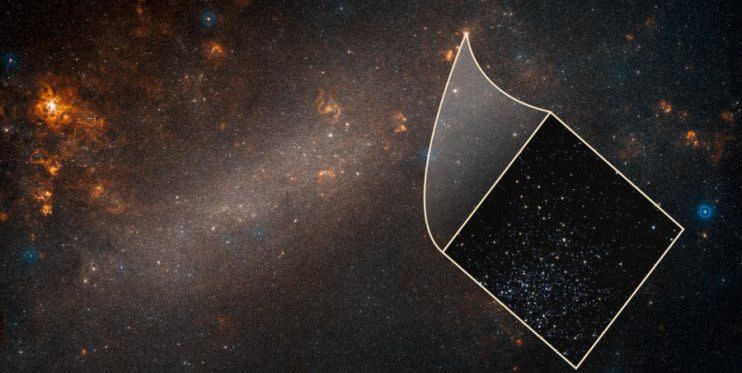Universe Surprises Scientists With Rapid Expansion

You just can't slow down time and space: The universe is expanding 9 percent faster than scientists ever expected, according to new measurements from NASA's Hubble Space Telescope.
It's a big task, measuring the expansion of the known universe. Naturally, it's always been something of a time suck for the Hubble. But thanks to a new method called DASH-Drift and Shift-the telescope can now rapidly take photos of several regions of space.
The Hubble measures expansion through the close monitoring of stars known as Cepheids, which are seen as "cosmic yardsticks." In 1912, an astronomer named Henrietta Swan Leavitt published findings showing that Cepheids "pulsated at a rate which depended solely on their absolute magnitude," meaning that their luminosity could be used to measure distance. Their pulsing energy could change with distance, allowing them to physically show universal expansion.
Interestingly, Leavitt's research significantly influenced Edwin Hubble himself. And now the famed telescope that bears his name is building upon the scientific work that Leavitt began.
Using the DASH method, NASA scientists are able to turn the Hubble Telescope into something resembling a point-and-click camera, which lets them "observe a dozen Cepheids in the same amount of time it would normally take to observe just one," according to a press statement.
"This mismatch has been growing and has now reached a point that is really impossible to dismiss as a fluke. This is not what we expected," says Adam Riess, professor of physics and astronomy at Johns Hopkins, a Nobel Laureate and the project's leader in the statement.
Riess says his team's measurements and NASA's previous efforts aren't just "two experiments disagreeing."
"We are measuring something fundamentally different," says Riess in the statement. "One is a measurement of how fast the universe is expanding today, as we see it. The other is a prediction based on the physics of the early universe and on measurements of how fast it ought to be expanding. If these values don't agree, there becomes a very strong likelihood that we're missing something in the cosmological model that connects the two eras."
As for that "something," Riess and his team aren't exactly sure what's leading to the discrepancy. But they'll continue to work to fine-tune the Hubble, cutting down on any uncertainty within their results. Until then, the universe remains as mysterious as ever.
Source: Johns Hopkins
('You Might Also Like',)

